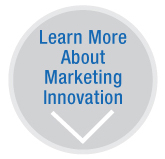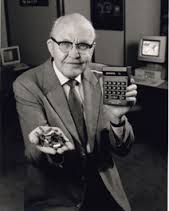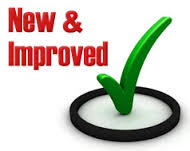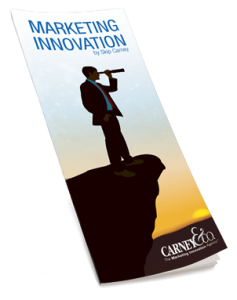Tag: marketing

Twinkle. A Chesapeake 17 Sea Kayak.
I’ve been building brands for over 35 years. Last year I did something new. I built a boat. A Chesapeake 17 Sea Kayak by #CLCBoats, made of marine plywood, epoxy, fiberglass, and time. It took about three months and I learned a lot about woodworking along the way.
I also learned that building a boat is a lot like building a brand.
 The Unique Selling Proposition was the golden rule of advertising for decades, and no matter how much lip service is given to the value proposition and other strategies, the mindset of the USP is still there. It’s time to lay it to rest.
The Unique Selling Proposition was the golden rule of advertising for decades, and no matter how much lip service is given to the value proposition and other strategies, the mindset of the USP is still there. It’s time to lay it to rest.
(more…)
I took a quick, very unscientific survey recently. It was a one question survey: When you think of Walmart, do you think of innovation? 100 of the answers were the same… “no”. Walmart is just a big ol’ store with lots of stuff at low prices. No innovation, right? Think again.
There’s an unwritten rule in every industry that says “We all go to market the same way.” It’s a dumb rule and I’ve been preaching against it for 35 years. I wish I could say I wrote the book on the subject, but Marty Neumeier beat me to it. More on that in a moment. (more…)
Last Saturday, I jumped in the truck, turned on the radio, and there he was… the local DJ with the used car dealer urging me to “Come on down right now for free pizza, a chance to spin the wheel, and drive away in a certified preowned, like-new car with zero down and no interest… ” I had to laugh.
“Hurry on down!!!!!”
You know the routine. You’ve heard it. Maybe you even responded to it. But did you really buy a car because there was free pizza? Did you really believe today’s offer was a “once in a lifetime” deal?
No. You bought the car because you needed a car and you found the car you liked at the price you found reasonable. The advertising just happened to connect with you at the same time you had a need or interest.
Advertising is NOT Selling. It’s communication.
 This is where so many marketers get lost. They confuse communication with selling and adopt a “used car salesman” approach to their communication. It’s dangerous territory. When you communicate “buy now”… especially on a major purchase… you diminish the value of your product or service and, more importantly, you insult your potential customer.
This is where so many marketers get lost. They confuse communication with selling and adopt a “used car salesman” approach to their communication. It’s dangerous territory. When you communicate “buy now”… especially on a major purchase… you diminish the value of your product or service and, more importantly, you insult your potential customer.
The message IS the brand.
 To start with, people are not stupid. If you assume they are, you will treat them that way and they will know it. On the other hand, if you treat them with respect, they will respond with respect. Your message IS your brand, so choose your message carefully. You don’t have to tell people to “buy now”, “call today” or “apply now”. The more you do, the more you act like a commodity. The more you act like a commodity, the less respect your brand receives in the marketplace.
To start with, people are not stupid. If you assume they are, you will treat them that way and they will know it. On the other hand, if you treat them with respect, they will respond with respect. Your message IS your brand, so choose your message carefully. You don’t have to tell people to “buy now”, “call today” or “apply now”. The more you do, the more you act like a commodity. The more you act like a commodity, the less respect your brand receives in the marketplace.
The used car salesman has an image because he acts like a used car salesman. Don’t be that guy.
Carney & Co and Marketing Innovation
 We use a powerful, unique ReVision™ process to uncover innovation, generate bigger ideas, and produce better results for our clients.
We use a powerful, unique ReVision™ process to uncover innovation, generate bigger ideas, and produce better results for our clients.
Learn more at www.carneyco.com.
 This is a story about the little things. The little things that solve little problems that give customers what they want and bring success to the little thing innovator. Hewlett-Packard had great success with the handheld calculator but they did NOT invent the handheld calculator. That honor belongs to Texas Instruments. The first calculator was big and bulky and cost $2500.
This is a story about the little things. The little things that solve little problems that give customers what they want and bring success to the little thing innovator. Hewlett-Packard had great success with the handheld calculator but they did NOT invent the handheld calculator. That honor belongs to Texas Instruments. The first calculator was big and bulky and cost $2500.
What makes ours special? Nothing. Except…
 That was 1967. By the 70’s, Hewlett-Packard and others had knocked off the idea and the price had dropped to about $75. Bill Hewlett was talking with the ad team of Dick Orkin and Bert Berdis about an ad campaign to sell more calculators. They asked “What makes your product special?” He replied, “Nothing. They all perform the same functions. They all cost about the same. Nothing.” And then he said, “…we do have one little thing. The problem with other calculators is that they are slick on the bottom and slide across your desk when you punch the keys. We added four little rubber feet to keep ours from sliding.”
That was 1967. By the 70’s, Hewlett-Packard and others had knocked off the idea and the price had dropped to about $75. Bill Hewlett was talking with the ad team of Dick Orkin and Bert Berdis about an ad campaign to sell more calculators. They asked “What makes your product special?” He replied, “Nothing. They all perform the same functions. They all cost about the same. Nothing.” And then he said, “…we do have one little thing. The problem with other calculators is that they are slick on the bottom and slide across your desk when you punch the keys. We added four little rubber feet to keep ours from sliding.”
Orkin and Berdis sat down on the curb outside Hewlett’s office and created a radio commercial that focused on the sliding problem and the little rubber feet. Sales of H-P calculators went through the roof. Those little rubber feet didn’t add 2 cents to the cost of the product but solved a serious problem that mattered to customers. The little innovation, and the marketing that went with it, made the difference for H-P.
Every problem is an opportunity for innovation. Solve the problem, tell people about it, and you’ll be a star.
 Simon Sinek in Start With Why says innovation is revolutionary. It changes industries, changes the way we do things. According to Sinek, innovation is a BIG DEAL. He is right. And he is wrong.
Simon Sinek in Start With Why says innovation is revolutionary. It changes industries, changes the way we do things. According to Sinek, innovation is a BIG DEAL. He is right. And he is wrong.
Innovation is a big deal about 2 percent of the time. 98 percent of the time though, innovation goes unnoticed by most of the world. Most innovations are small, simple ideas that by themselves, don’t make a big difference. (more…)
It’s a simple fact: Your customers have to pay for your marketing…and they don’t mind at all.
When you market innovation, you are offering a unique solution to your customer’s problems. You are making their lives easier, better, faster, more comfortable and they are happy to pay for that. So, not only do you have to put the cost of marketing into your product, you have to make sure you put enough in there to do the job right.
Companies like Lexus, Apple, Sonos, and Marriott get this. They work with margins that allow for aggressive product develop, exceptional customer service, and (of course) brilliant marketing. It’s the philosophy that “I have to charge you enough to give you the product or service that you deserve.” When you subscribe to this philosophy, you are focused on the customer and the customer experience and not the bottom line. You know that the bottom line will take care of itself.
And there’s more!
The added bonus to all this customer-focused innovation marketing is that the brand is automatically elevated in the marketplace and your customer is even MORE satisfied with her purchase. It’s further confirmation that she made the right decision and confidence that the product and brand will continue to provide value in the future.
So, put enough margin into your product to expand your offering and tell your story completely. We’ll gladly pay for it.
Innovation is the buzzword of the century and, while it is laudable to want to be like Apple or Amazon, it’s hardly necessary to reinvent your industry to find success. It IS necessary to market innovation.
Why marketing innovation works.
Simply put, innovation is a creative solution to a customer problem. Big problems, little problems, everybody has them and they all need solutions. Every business is capable of this kind of innovation and most are innovating every day. They just fail to realize or act on that innovation and most importantly, they fail to market it.
Customers want more than just solutions to their problems, they want NEW solutions. They will ALWAYS want new solutions. Tide laundry detergent has been “new and improved” more than 80 times in the past 75 years. Most of those innovations were not earth shattering, but they were significant enough that Tide has maintained its dominance in its category. Look around your company. You have innovation opportunities everywhere. Solve your customers’ problems and then tell them about it. Your brand, market share, sales growth, and profit margin will all follow.
It happens to just about every company.
 They start off all quirky and fun. Ready to take risks, to be themselves without taking themselves too seriously. Then, all of a sudden (it seems) they hit the big time and they get all serious and busyness-like. Before you know it, you hardly know them at all and you start to drift apart.
They start off all quirky and fun. Ready to take risks, to be themselves without taking themselves too seriously. Then, all of a sudden (it seems) they hit the big time and they get all serious and busyness-like. Before you know it, you hardly know them at all and you start to drift apart.
Please tell me, Mr. and Mrs. Southwest Airlines, that you won’t let this happen to you.
I remember my first Southwest experience. I’ll bet you do, too. The people were genuinely nice. Genuinely “genuine”. They sang. They told stupid jokes and very punny puns. It was so weird. I loved it. I’ve noticed recently, though, that the quirkiness is gone. Along with the perkiness. Even their advertising has taken a more serious tone.
I asked a flight attendant “Why don’t you sing anymore?” She said,”You need to write to management. They want us to stop that kind of thing. I miss it.”
Me too.




